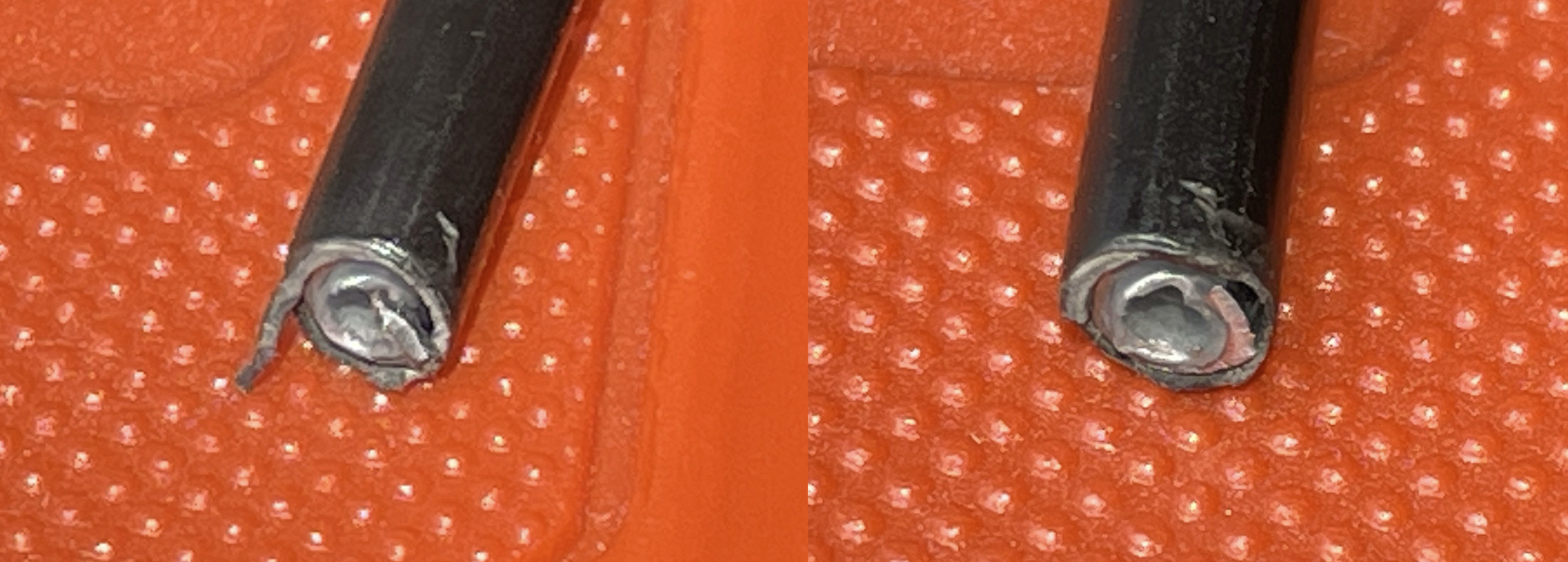This is a sequel to an earlier question.
Park Tool's CN-10 (and similar, such as Pro's Team Cable Cutter, Jagwire's Pro Cable Crimper and Cutter, Pedro's Cable and Housing Cutter, Feedback Sports' Cable and Housing Cutter, Shimano's TL-CT12 Cable Cutter, and others), is labeled "cable and housing cutter".
But in Park Tool's own video Calvin Jones uses the side cutter pliers SP-7 for cutting (brakes) wound housing.
Is the (brakes-specific) wound housing too tough for the CN-10? I have enough extra cable length to experiment, but I'd rather not risk damaging the CN-10.
Will good hardware-store side cutting pliers (aka diagonal cutting pliers) do the trick, or is the SP-7 (or similar) really necessary?
Another experiment, as mentioned in an answer to the question quoted above, is to use a Dremel circular cutter. There I'm less worried about damaging something than having a circular cutting tool fly off into a body part (and I won't know whether I can do it fast enough to avoid heat that will melt the plastic parts until after the fact).

